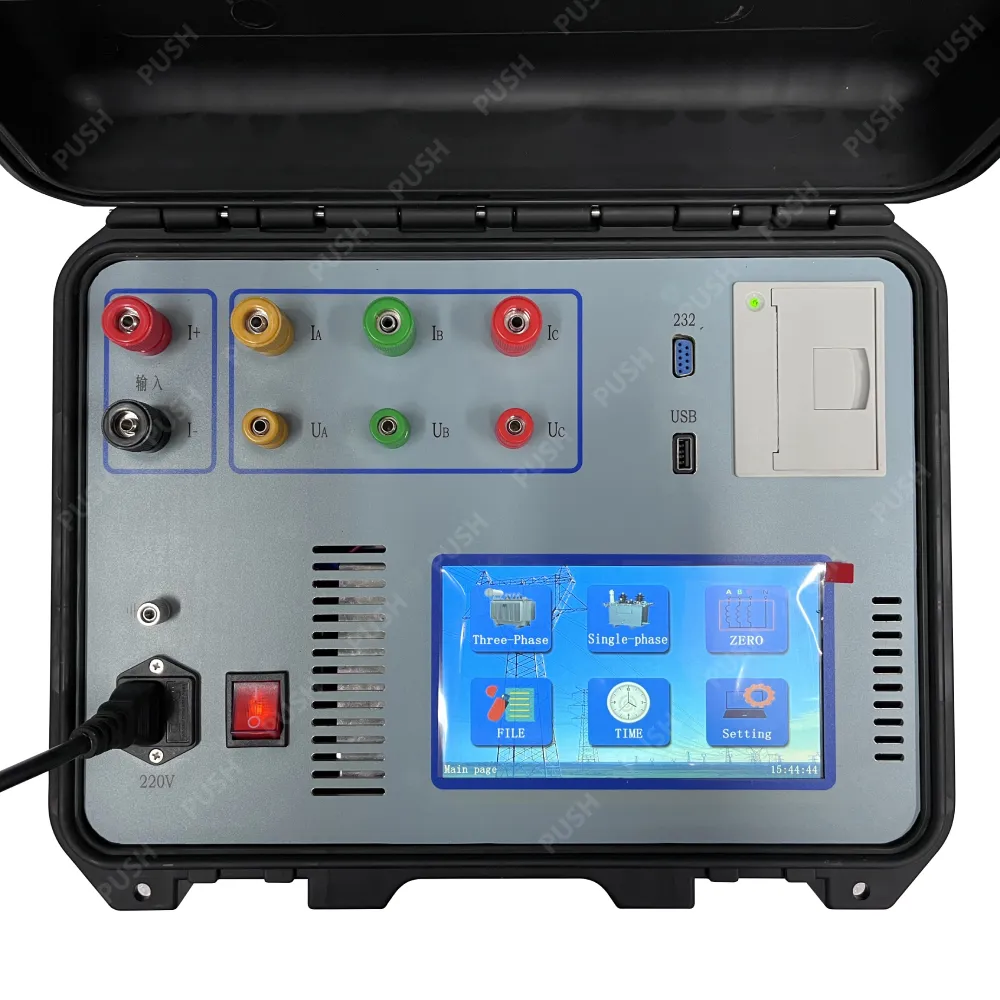 English
English


Exploring the Effects of High Voltage Pot Test on Electrical Equipment Performance and Safety Standards
The Importance of High Pot Test Voltage in Electrical Engineering
High Pot Test, or High Potential Test, is a critical procedure in electrical engineering and maintenance, designed to ensure the insulation integrity of electrical systems. This test employs a high voltage to evaluate the insulation of cables, transformers, circuit breakers, and other electrical equipment. By applying a voltage significantly higher than the normal operating conditions, engineers can identify weaknesses in the insulation that could lead to electrical failures.
The primary purpose of the High Pot test is to detect insulation failures before they lead to catastrophic faults. During operation, electrical equipment is exposed to various stresses, including temperature fluctuations, moisture, and mechanical wear. Over time, these factors can degrade the insulation materials, leading to partial discharge or electrical breakdown. A High Pot test can simulate these conditions artificially, providing an accelerated examination of the insulation’s effectiveness.
The Importance of High Pot Test Voltage in Electrical Engineering
The testing process involves connecting a high-voltage power supply to the equipment's insulating part. As the voltage gradually increases, monitoring devices observe any signs of insulation failure, such as current leakage or arcing. If the insulation withstands the high voltage without breakdown, it indicates that the insulation is in good condition. However, if the insulation fails, the test will reveal weaknesses that must be addressed before the equipment can be safely put into operation.
high pot test voltage

In addition to determining insulation quality, the High Pot test can also uncover manufacturing defects. High-quality manufacturing processes often ensure that insulation materials meet rigorous standards, but faults can still occur. Testing helps to identify these issues early, allowing for corrective measures to be taken before equipment deployment.
One significant advantage of the High Pot test is its role in predictive maintenance. By performing regular High Pot tests on electrical systems, facilities can anticipate maintenance needs and avoid unexpected failures. This proactive approach leads to increased reliability and efficiency, minimising downtime and repair costs.
Moreover, compliance with safety regulations is another crucial aspect of High Pot testing. Many industries are governed by strict electrical safety standards that require regular testing of equipment, especially in high-voltage environments. Conducting High Pot tests not only helps in adhering to these regulations but also assures operators and stakeholders of the safety and reliability of their electrical systems.
Despite its advantages, the High Pot test must be conducted with care. High voltages can pose significant safety risks to personnel. Therefore, proper training, protective equipment, and safety protocols are essential to prevent accidents during testing.
In conclusion, the High Pot test plays an invaluable role in electrical engineering by ensuring the reliability and safety of electrical equipment. By identifying insulation weaknesses and preventing potentially catastrophic failures, this testing method fosters improved operational reliability and compliance with safety standards. As technology continues to evolve, the importance of routine High Pot testing will only grow, standing as a testament to the ongoing commitment to safety and efficiency in electrical engineering practices.
-
Differences between open cup flash point tester and closed cup flash point testerNewsOct.31,2024
-
The Reliable Load Tap ChangerNewsOct.23,2024
-
The Essential Guide to Hipot TestersNewsOct.23,2024
-
The Digital Insulation TesterNewsOct.23,2024
-
The Best Earth Loop Impedance Tester for SaleNewsOct.23,2024
-
Tan Delta Tester--The Essential Tool for Electrical Insulation TestingNewsOct.23,2024





